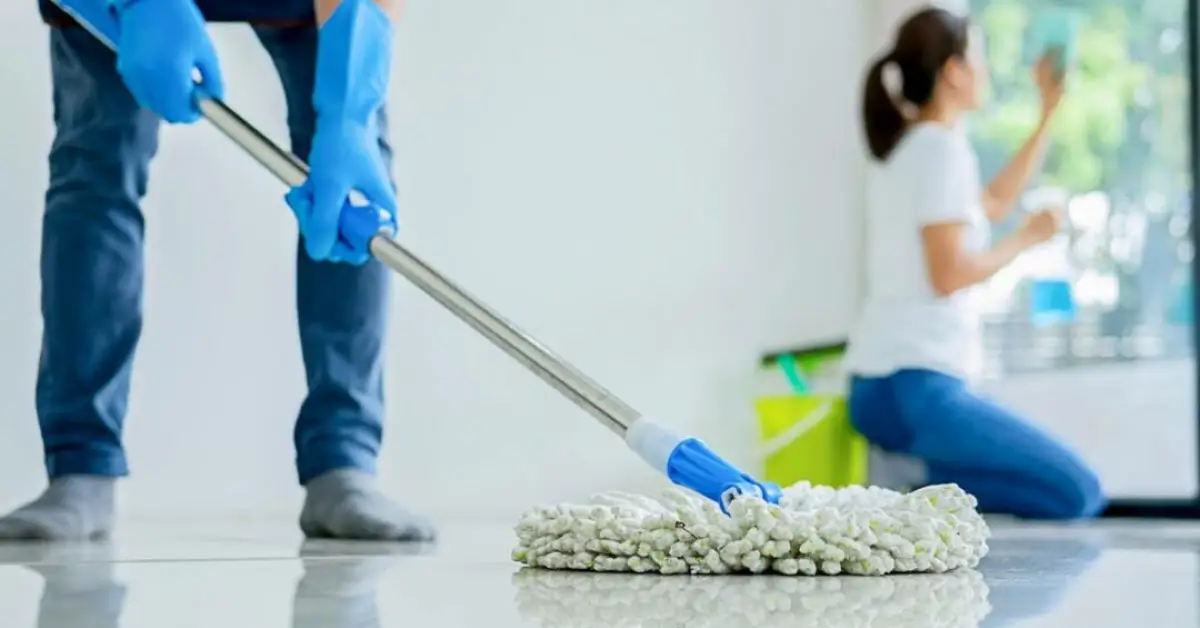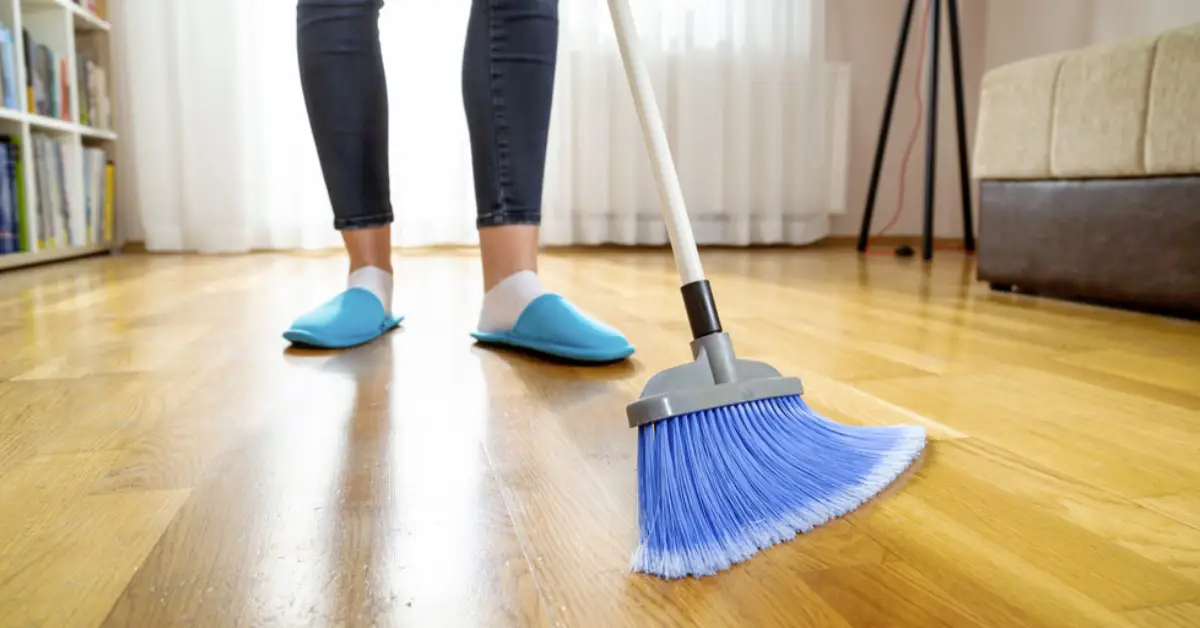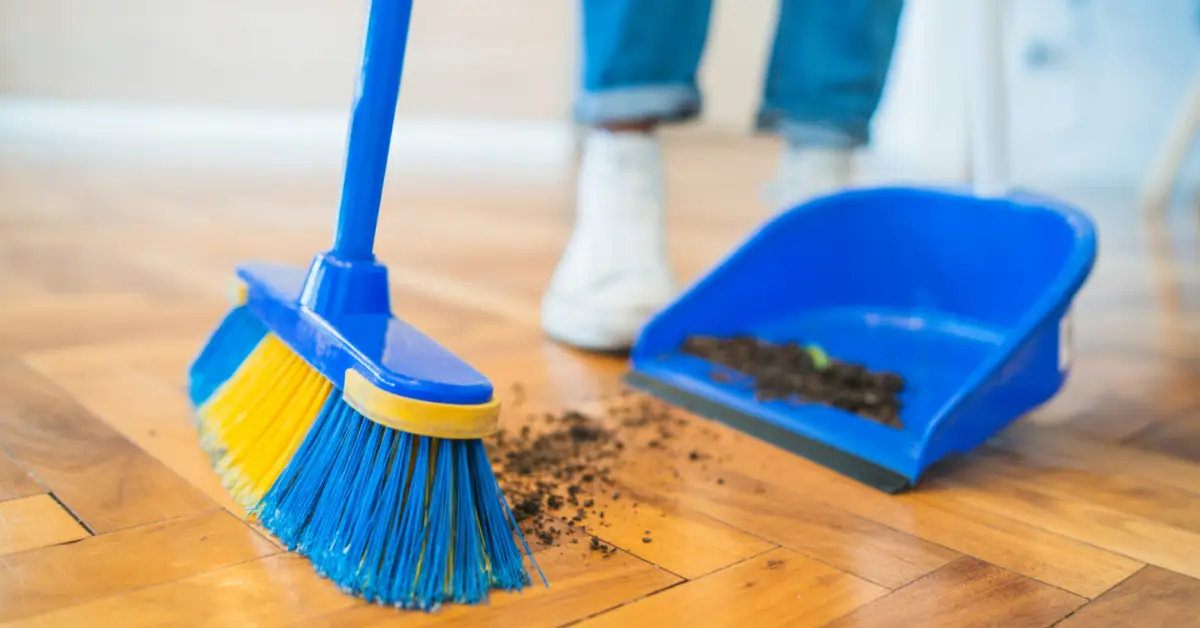How Often Should You Sweep? Experts Weigh In with 7 Must-Know Tips
We all know the feeling—your home looks mostly clean, but there’s something about the dust in the air and that little bit of dirt you can’t quite reach that drives you crazy. I used to think I could get away with skipping some spots here and there, but trust me, those little missed areas add up. After all, sweeping isn’t just about making your home look tidy—it’s about creating a healthier, more comfortable living space.
If you’re anything like me, you probably don’t want to spend all weekend sweeping and cleaning. But here’s the truth: focusing on a few key spots every week can make a huge difference. In this article, I’ll show you the simple sweeping habits you might be overlooking—habits that will save you time, make your home cleaner, and even help improve your health. Let’s dive in!
Why Sweeping Regularly is Crucial for a Cleaner Home
I get it—sweeping might not be the most glamorous task on your to-do list. But trust me, it’s one of the most important habits for keeping your home clean and healthy. When you skip regular sweeping, you’re not just leaving dirt on the floor. You’re allowing dust, allergens, and even germs to build up, which can affect your health and the cleanliness of your entire home.
Here’s why sweeping should be a regular part of your cleaning routine:
- Dust and Allergens: Sweeping helps reduce the buildup of dust and allergens in your home, making the air you breathe cleaner. It’s especially important if anyone in your household suffers from allergies or respiratory issues. Regular sweeping can significantly improve air quality, making your living space healthier. For more on how cleaning helps with allergies, check out this expert advice on Healthline.
- Prevents Stains: Dirt that gets left behind after sweeping can get ground into your floors, especially in high-traffic areas. Over time, this can cause permanent stains that are tough to remove. Sweeping regularly helps prevent this, keeping your floors looking fresh and new for longer.
- Improves Health: A clean home isn’t just about appearance; it’s also about your well-being. Sweeping regularly helps remove not only dust but also other particles that can affect your respiratory system. By reducing allergens and particles that trigger asthma, you’re creating a healthier environment for everyone at home.
7 Simple Sweeping Tips You’re Overlooking (And Why They Matter)

When it comes to sweeping, most of us think we have it all figured out. But the truth is, there are some easy sweeping habits that many of us overlook. These little changes can make a big difference in how effective and efficient your cleaning routine is. Let me walk you through 7 simple sweeping tips that can help you clean smarter, not harder:
- Tip #1: Sweep Regularly, Even in Low-Traffic Areas
We all know the kitchen and living room get a lot of attention when it comes to sweeping, but bedrooms, hallways, and spare rooms can easily be neglected.- Why It Matters: Even in less-visited areas, dust and dirt build up over time. Sweeping these rooms regularly prevents dust from spreading to other areas of the house, making your overall cleaning routine quicker and easier in the long run.
- Tip #2: Use the Right Tools
Not all brooms are created equal. If you’re still using that old, worn-out broom, it might be time for an upgrade. Consider investing in a high-quality broom, a sturdy dustpan, or even a robot vacuum for easier cleanup.- Why It Matters: Using the right tools can minimize the effort you put into sweeping and maximize how much dirt you collect. You’ll save time and energy, and your floors will be much cleaner. Choosing the right tools goes beyond just brooms and dustpans. For example, if you’re working with tiled floors, you’ll want to consider how to maintain their appearance while sweeping. Check out our guide on 7 Easy Ways to Remove Tile Grout Without Damaging Your Floors for some great tips on keeping your floors in top shape. Check out more expert guide on How Often Should You Sweep Your Floors for a Clean Home.
- Tip #3: Sweep in Long, Smooth Strokes
I get it—sometimes it feels easier to do quick, short sweeps, but that’s not the best way to clean. Instead, use long, fluid strokes when sweeping.- Why It Matters: Sweeping in long strokes helps you pick up more dirt with each pass, and you won’t end up pushing the dirt around. This simple technique allows you to cover more ground in less time, making your sweeping more effective.
- Tip #4: Don’t Forget the Corners
We tend to focus on the center of the room, but corners are where a lot of dirt hides. You know that little pile of dust that always seems to show up in the corner? That’s because we often miss it when we sweep.- Why It Matters: If you ignore the corners, you’re leaving dirt behind, which makes your home look less clean overall. Make it a habit to sweep into the corners to ensure you’re collecting all the dirt, even the hard-to-reach spots.
- Tip #5: Sweep with a Dustpan at an Angle
Ever notice how the dirt can spill out of your dustpan as you try to collect it? A small tweak in your technique can make a huge difference.- Why It Matters: Tilting the dustpan slightly helps you keep the dirt inside instead of letting it spill out, saving you time and making the process smoother. It also prevents dirt from falling back onto the floor, keeping your space cleaner.
- Tip #6: Use a Microfiber Dustpan
If you’re still using a basic plastic dustpan, it might be time to upgrade to one with microfiber.- Why It Matters: Microfiber dustpans are more effective at trapping dust and tiny particles that plastic dustpans can miss. This ensures you’re not leaving behind any debris, which makes your home cleaner and your effort more worthwhile.
- Tip #7: Sweep Before Mopping or Vacuuming
It’s tempting to mop first, but sweeping before you mop (or vacuum) is actually a better approach.- Why It Matters: If you mop without sweeping, you’ll just push dirt around, and your floors won’t get as clean. Sweeping first ensures that when you mop, you’re cleaning the floor without spreading dirt or damaging your mop.
By incorporating these tips into your regular routine, you’ll not only sweep more effectively, but you’ll also notice a cleaner, fresher home. It doesn’t take much effort, just a few small changes in how you sweep.
How Often Should You Sweep Based on Your Home’s Needs?

Sweeping frequency depends on the area you’re cleaning. Certain parts of your home require more frequent attention than others to stay clean and healthy. Here’s a breakdown of how often you should be sweeping different spaces:
- High-Traffic Areas (Living Room, Hallways): Sweep every 1–2 days to keep up with heavy foot traffic. These areas accumulate dust, dirt, and debris quickly due to constant movement. Sweeping regularly prevents buildup and keeps the space looking fresh.
- Kitchen Floors: Sweep daily due to crumbs, spills, and grease. The kitchen is a hotspot for dirt and food particles, especially after meals. Sweeping daily helps keep things clean and reduces the risk of pests.
- Bathrooms: Sweep 2–3 times a week to remove dirt and moisture. Bathrooms are prone to moisture and grime, making regular sweeping necessary to avoid mildew and bacteria buildup.
- Low-Traffic Areas (Bedrooms, Spare Rooms): Sweep once a week or as needed. While these areas don’t collect dirt as quickly, regular sweeping prevents dust from accumulating and spreading to other rooms.
What Tools Make Sweeping Easy and Effective?
The right tools can make all the difference in how quickly and efficiently you sweep your home. Here’s what you need to know about choosing the best tools for the job:
- Brooms vs. Vacuums: Brooms work best for hard surfaces like tile and hardwood, while vacuums are better for carpets and rugs. Using the correct tool for your floor type maximizes your cleaning power. A vacuum can pick up smaller debris, while a broom is ideal for sweeping larger particles.
- Microfiber Dustpans: Microfiber dustpans are more effective at trapping dust and dirt compared to traditional plastic ones. They help reduce the amount of dust that escapes during cleanup, making the process much more thorough.
- Robot Vacuums: These devices can automate part of your sweeping routine, offering a hands-off solution to floor cleaning. Robot vacuums are especially great for high-traffic areas and can be scheduled to clean daily, keeping your floors cleaner with minimal effort on your part.
How to Sweep Effectively: Step-by-Step Guide
Sweeping may seem simple, but doing it the right way makes a huge difference. Follow this step-by-step guide to ensure you’re sweeping as effectively as possible:
- Start at the Edge: Begin sweeping in the corners and work your way towards the center of the room. Sweeping from the edges allows you to gather dust and debris that tends to collect in corners, which are often missed.
- Use Long Strokes: Avoid short, choppy motions. Sweep in long, smooth strokes to gather dirt more efficiently. Long strokes ensure you collect more dirt with each motion, saving time and effort. It also prevents dirt from being pushed around the room.
- Gather Dirt in a Pile: Once you’ve swept the dirt, use a dustpan to collect it in one pile. Efficiently collecting dirt in a pile reduces the number of trips you need to make to the trash can, making the process quicker.
- Finishing Touches: After gathering most of the dirt, go back to any tight corners or edges where dust might have settled. These small areas often hold onto dust that doesn’t get picked up in the main sweeping motions. A quick final sweep ensures everything is picked up.
Southern Living provides expert advice Habits Of People Who Always Have A Clean Home.
How Sweeping Changes Based on the Season: Tips for Every Weather Condition

Sweeping isn’t a one-size-fits-all job. Each season presents unique challenges that require different approaches to maintain a clean home. Here’s how to adapt your sweeping routine to each season:
- Summer (Dust and Pollen): Sweep more often to combat dust and pollen buildup, especially around windows and vents. Summer brings higher pollen levels, which can trigger allergies. Regular sweeping helps clear airborne particles and keeps the air fresher.
- Fall (Leaves and Mud): With falling leaves and wet weather, daily sweeping becomes necessary to keep mud and leaves from tracking inside. Wet dirt and leaves can leave stains and damage floors. Sweeping daily ensures your home stays clean and safe during these messy months.
- Winter (Salt and Snow): Sweep frequently to avoid salt buildup and protect your floors from damage caused by snow and ice-melt chemicals. Salt can be tough on floors, especially hardwood and tile. Regular sweeping minimizes damage and keeps floors looking their best. While regular sweeping helps protect your surfaces, if you’re dealing with a more extensive flooring issue, it may be time to tackle a subfloor replacement. Here’s a step-by-step guide on how to replace your subfloor without calling a contractor and avoid future damage.
- Spring (Cleaning Time): Spring is the perfect time for deep cleaning. Make sure to sweep under furniture and behind appliances for a more thorough clean. Dust and dirt can accumulate in hidden areas. Sweeping these spots ensures your spring cleaning is complete and your home feels fresh.
The Environmental and Health Benefits of Sweeping Regularly
Regular sweeping isn’t just good for cleanliness—it’s also great for your health and the environment. Here’s why sweeping frequently can have lasting benefits:
- Eco-Friendly Practices: Regular sweeping helps reduce your reliance on chemical cleaners, promoting a healthier, more sustainable home environment. By cutting down on chemicals, you’re not only reducing exposure to harsh substances, but also contributing to a cleaner environment. If you’re looking to make your entire home more sustainable, consider installing eco-friendly flooring like cork. Learn more about why cork flooring is the best eco-friendly choice for your home and how it complements your cleaner, greener lifestyle.
- Preventing Pests: Keeping your floors clean helps prevent pests like ants and termites from settling in. Regular sweeping removes food crumbs and debris that attract unwanted visitors. Sweeping regularly helps create a barrier against pests, keeping your home safer and reducing the need for chemical pest control.
Bonus Tip: How to Turn Sweeping into a Daily Habit
Turning sweeping into a daily habit can help maintain a consistently clean home without much extra effort. Here’s how to make it a routine:
- Set a Timer: Commit to sweeping for just 5 minutes every day. A small time commitment each day can prevent dirt from accumulating, making your weekly cleaning less overwhelming.
- Pair It with Another Routine: Tie sweeping to another habit, like after dinner or before bed. Associating sweeping with another task helps it become a natural part of your daily routine.
- Get the Whole Family Involved: Make sweeping a family activity, dividing the tasks to share the load. Involving others makes sweeping feel less like a chore, and it gets done faster, leaving more time for fun.
Conclusion – Start Sweeping Smarter Today
Sweeping doesn’t have to be a hassle. By following these simple tips and adapting to the seasons, you can maintain a cleaner, healthier home with minimal effort. It’s all about making sweeping a habit and choosing the right tools for the job.
Ready to sweep smarter? Share your favorite cleaning tips in the comments below, or visit Build Like New for more home cleaning hacks!
Disclaimer: The information provided in this article is for general cleaning and home care purposes only. Results may vary based on individual circumstances, and it’s always recommended to follow manufacturer instructions for cleaning products and tools. For specific health concerns, consult a professional.


